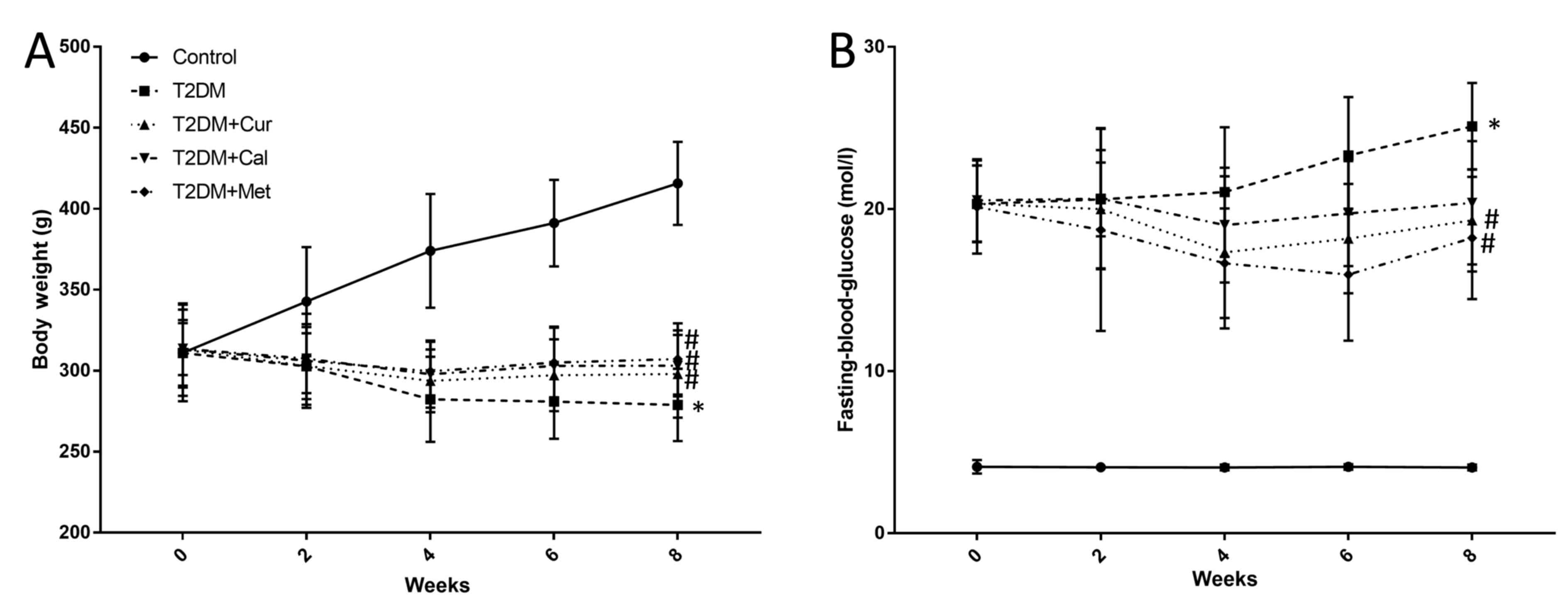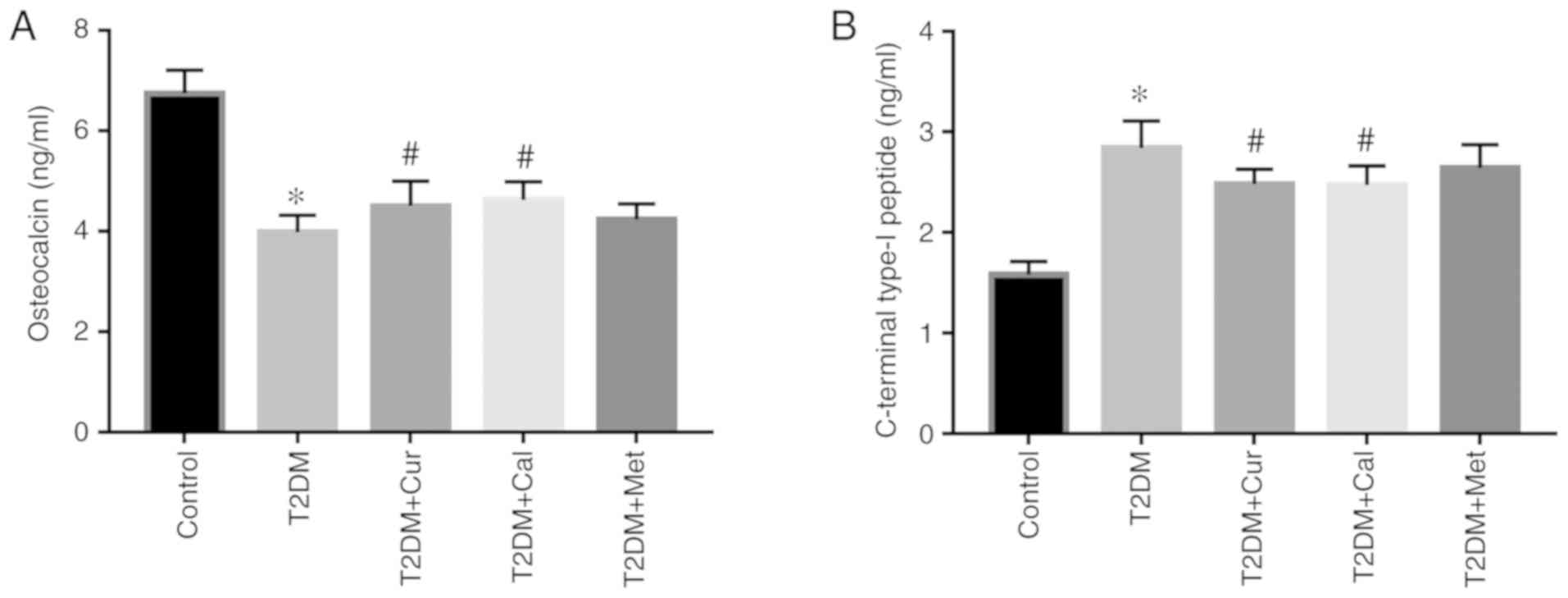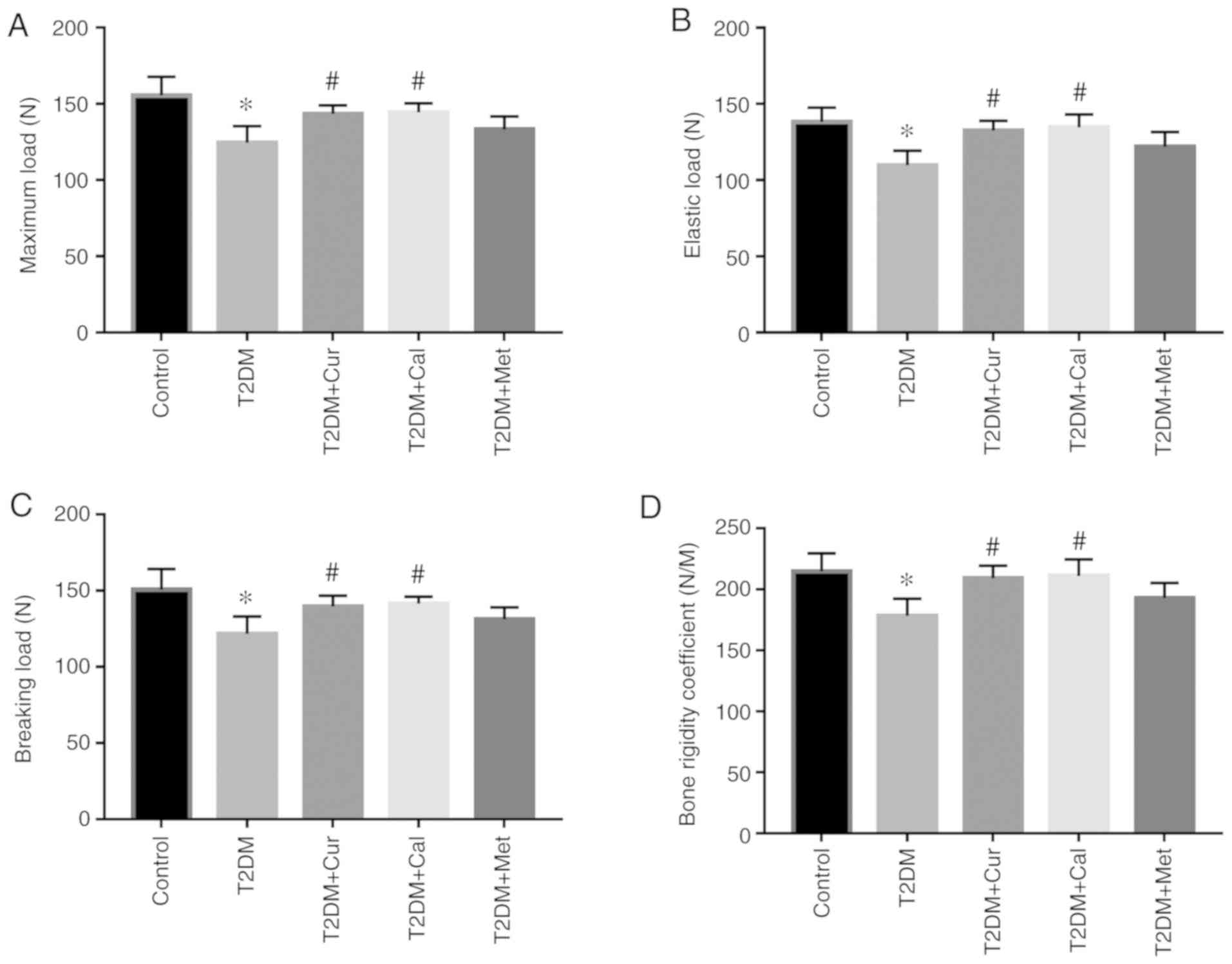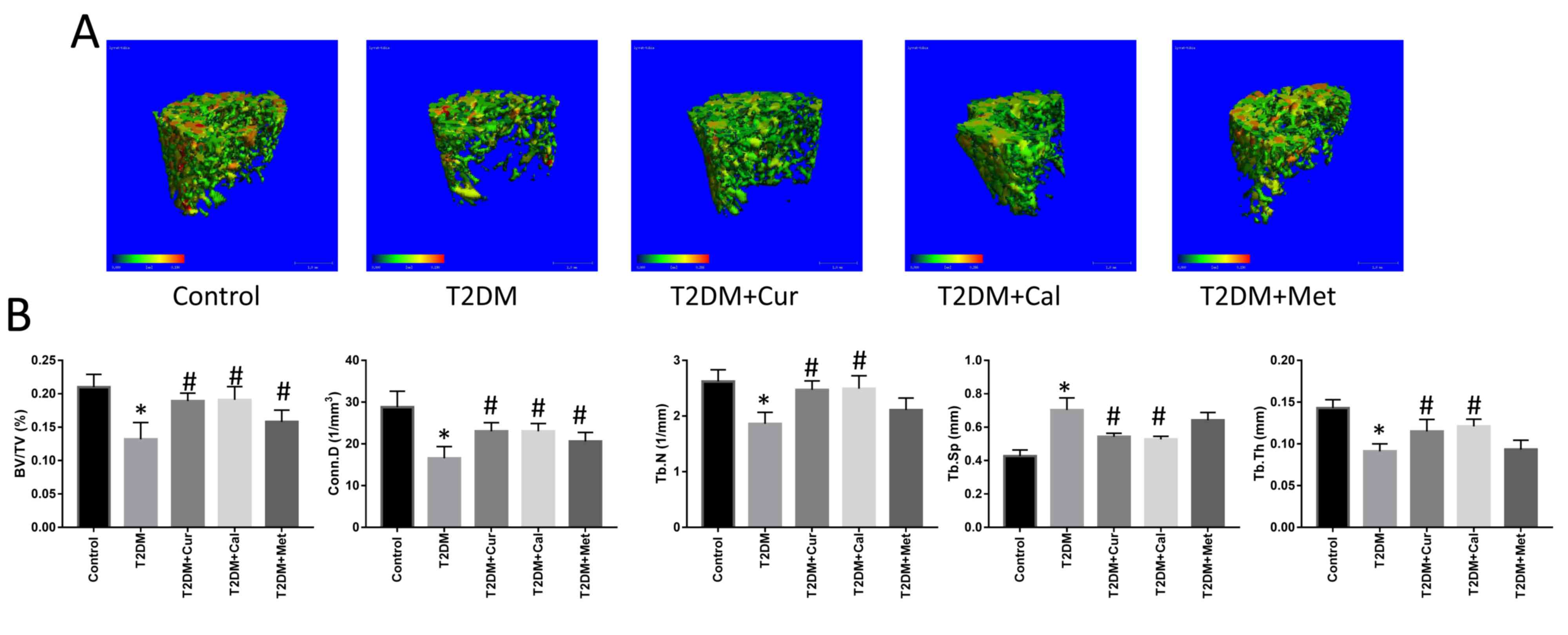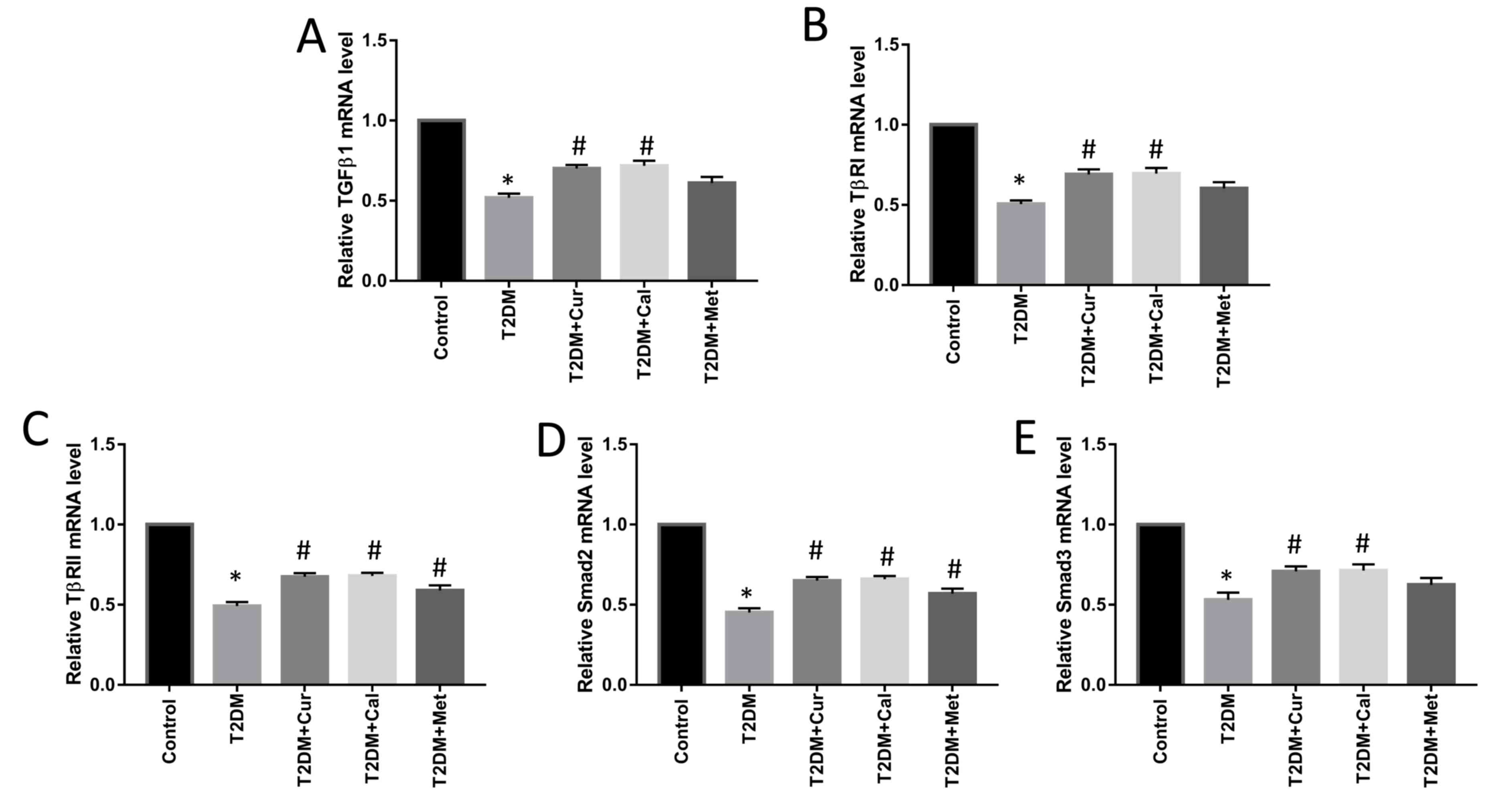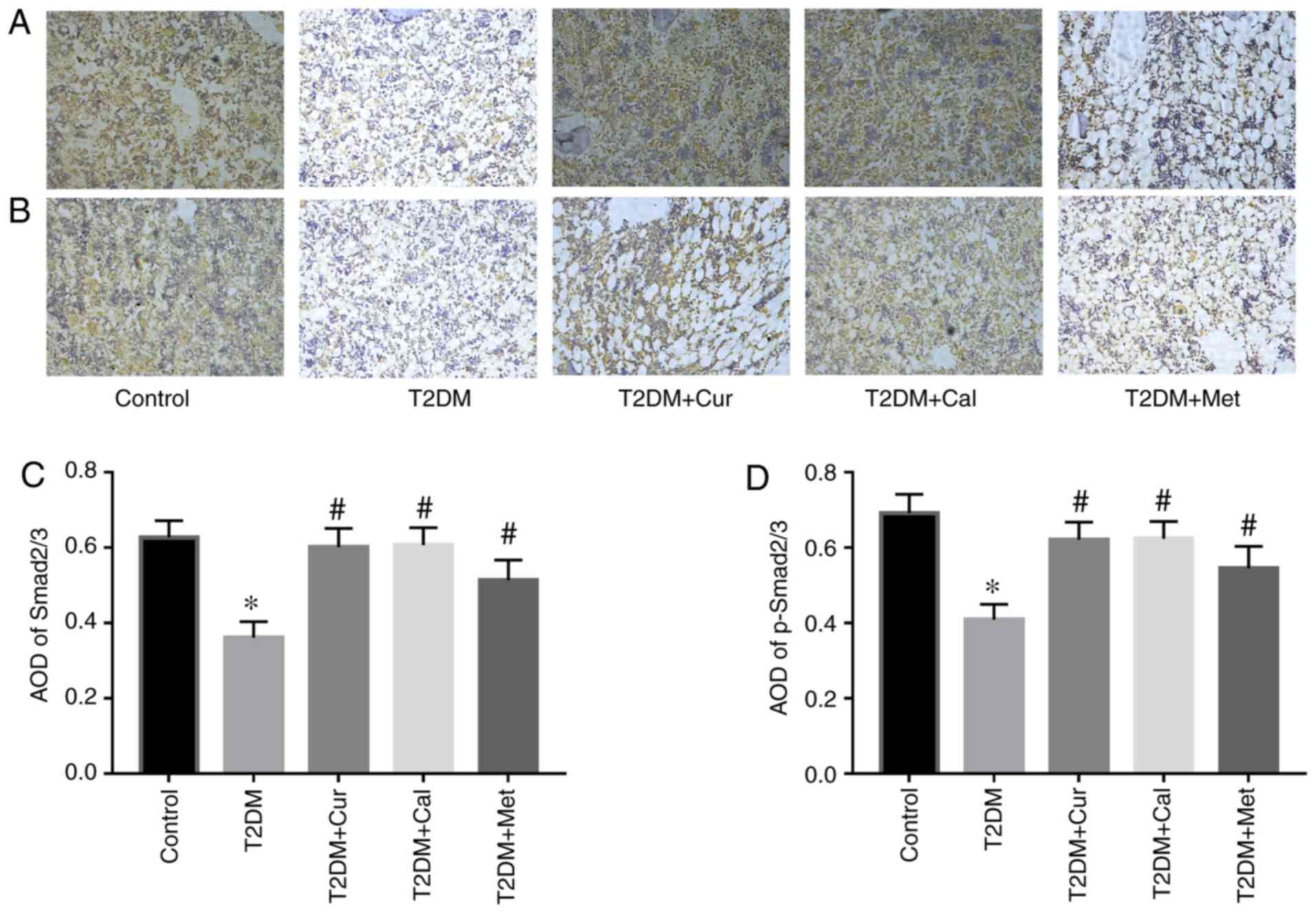|
1
|
Leslie WD, Rubin MR, Schwartz AV and Kanis
JA: Type 2 diabetes and bone. J Bone and Miner Res. 27:2231–2237.
2012.PubMed/NCBI View Article : Google Scholar
|
|
2
|
Goldshtein I, Nguyen AM, Depapp AE,
Ish-Shalom S, Chandler JM, Chodick G and Shalev V: Epidemiology and
correlates of osteoporotic fractures among type 2 diabetic
patients. Arch Osteoporos. 13(15)2018.PubMed/NCBI View Article : Google Scholar
|
|
3
|
Chen Z, Zhao GH, Zhang YK, Shen GS, Xu YJ
and Xu NW: Research on the correlation of diabetes mellitus
complicated with osteoporosis with lipid metabolism, adipokines and
inflammatory factors and its regression analysis. Eur Rev Med
Pharmacol Sci. 21:3900–3905. 2017.PubMed/NCBI
|
|
4
|
Martínez-Laguna D, Reyes C,
Carbonell-Abella C, Losada Grande E, Soldevila Madorell B, Mauricio
D, Díez-Pérez A, Nogués X and Prieto-Alhambra D: Use of drugs for
osteoporosis treatment in patients with type 2 diabetes mellitus:
Population-based cohort study. Rev Osteoporos Metab Miner.
9:107–113. 2017.
|
|
5
|
Parsons V, Mitchell CJ, Reeve J and Hesp
R: The use of sodium fluoride, vitamin D and calcium supplements in
the treatment of patients with axial osteoporosis. Calcif Tissue
Res. 22 (Suppl):S236–S240. 1977.PubMed/NCBI View Article : Google Scholar
|
|
6
|
Janovská Z: Bisphosphonate-related
osteonecrosis of the jaws. A severe side effect of bisphosphonate
therapy. Acta Medica (Hradec Kralove). 55:111–115. 2012.PubMed/NCBI View Article : Google Scholar
|
|
7
|
Tao W, Deqin Z, Yuhong L, Hong L, Zhanbiao
L, Chunfeng Z, Limin H and Xiumei G: Regulation effects on abnormal
glucose and lipid metabolism of TZQ-F, a new kind of traditional
Chinese medicine. J Ethnopharmacol. 128:575–582. 2010.PubMed/NCBI View Article : Google Scholar
|
|
8
|
Xu H, Xu HE and Ryan D: A study of the
comparative effects of hawthorn fruit compound and simvastatin on
lowering blood lipid levels. Am J Chin Med. 37:903–908.
2009.PubMed/NCBI View Article : Google Scholar
|
|
9
|
Sharma R, Gescher A and Steward W:
Curcumin: The story so far. Eur J Cancer. 41:1955–1968.
2005.PubMed/NCBI View Article : Google Scholar
|
|
10
|
Yang MW, Wang TH, Yan PP, Chu LW, Yu J,
Gao ZD, Li YZ and Guo BL: Curcumin improves bone microarchitecture
and enhances mineral density in APP/PS1 transgenic mice.
Phytomedicine. 18:205–213. 2011.PubMed/NCBI View Article : Google Scholar
|
|
11
|
Li G, Bu J, Zhu Y, Xiao X, Liang Z and
Zhang R: Curcumin improves bone microarchitecture in
glucocorticoid-induced secondary osteoporosis mice through the
activation of microRNA-365 via regulating MMP-9. Int J Clin Exp
Pathol. 8:15684–15695. 2015.PubMed/NCBI
|
|
12
|
Folwarczna J, Zych M and Trzeciak HI:
Effects of curcumin on the skeletal system in rats. Pharmacol Rep.
62:900–909. 2010.PubMed/NCBI View Article : Google Scholar
|
|
13
|
Chen NZ, Geng QQ, Zheng JB, He S, Huo XG
and Sun XJ: Suppression of the TGF-β/Smad signaling pathway and
inhibition of hepatic stellate cell proliferation paly a role in
the hepatoprotective effects of curcumin against alcohol-induced
hepatic fibrosis. Int J Mol Med. 34:1110–1116. 2014.PubMed/NCBI View Article : Google Scholar
|
|
14
|
Wu K, Gong Z, Zou L, Ye H, Wang C and Liu
Y, Liang Y, Li Y, Ren J, Cui L and Liu Y: Sargassum integerrimum
inhibits oestrogen deficiency and hyperlipidaemia-induced bone loss
by upregulating nuclear factor (erythroid-derived 2)-like 2 in
female rats. J Orthop Translat. 19:106–117. 2019.PubMed/NCBI View Article : Google Scholar
|
|
15
|
Gundala NKV, Naidu VGM and Das UN:
Amelioration of streptozotocin-induced type 2 diabetes mellitus in
Wistar rats by arachidonic acid. Biochem Biophys Res Commun.
496:105–113. 2018.PubMed/NCBI View Article : Google Scholar
|
|
16
|
Eriksen SP, Irwin GM and Swintosky JV:
Antacid properties of calcium, magnesium, and aluminum salts of
water-insoluble aliphatic acids. J Pharmaceutical Sci. 52:552–556.
1963.
|
|
17
|
Parvathy KS: Chemical approaches toward
preparation of water-soluble curcumin derivatives. PhD thesis,
University of Mysore, India, 2009.
|
|
18
|
Mchorney CA, Schousboe JT, Cline RR and
Weiss TW: The impact of osteoporosis medication beliefs and
side-effect experiences on non-adherence to oral bisphosphonates.
Curr Med Res Opin. 23:3137–3152. 2007.PubMed/NCBI View Article : Google Scholar
|
|
19
|
Cao L, Liu J and Tang X: What the back of
the object looks like: 3D reconstruction from line drawings without
hidden lines. IEEE Trans Pattern Anal Mach Intell. 30:507–517.
2008.PubMed/NCBI View Article : Google Scholar
|
|
20
|
Francisco JS, de Moraes HP and Dias EP:
Evaluation of the image-pro plus 4.5 software for automatic
counting of labeled nuclei by PCNA immunohistochemistry. Braz Oral
Res. 18:100–104. 2004.PubMed/NCBI View Article : Google Scholar
|
|
21
|
Wang T, Cai L, Wang Y, Wang Q, Lu D, Chen
H and Ying X: The protective effects of silibinin in the treatment
of streptozotocin-induced diabetic osteoporosis in rats. Biomed
Pharmacother. 89:681–688. 2017.PubMed/NCBI View Article : Google Scholar
|
|
22
|
Li H, Chu S, Zhao H, Liu D, Liu X, Qu X,
Chen J, Li Z and Li J: Effect of Zishen Jiangtang pill, a Chinese
herbal product, on rats with diabetic osteoporosis. Evid Based
Complement Alternat Med. 2018(7201914)2018.PubMed/NCBI View Article : Google Scholar
|
|
23
|
Aggarwal BB and Harikumar KB: Potential
therapeutic effects of curcumin, the anti-inflammatory agent,
against neurodegenerative, cardiovascular, pulmonary, metabolic,
autoimmune and neoplastic diseases. Int J Biochem Cell Biol.
41:40–59. 2009.PubMed/NCBI View Article : Google Scholar
|
|
24
|
Gutierres VO, Assis RP, Arcaro CA,
Oliveira JO, Oliveira Lima TF, Remédio Zeni Beretta AL, Costa PI,
Baviera AM and Brunetti IL: Curcumin improves the effect of a
reduced insulin dose on glycemic control and oxidative stress in
streptozotocin-diabetic rats. Phytother Res. 33:976–988.
2019.PubMed/NCBI View
Article : Google Scholar
|
|
25
|
Stanić Z: Curcumin, a compound from
natural sources, a true scientific challenge-a review. Plant Foods
Hum Nutr. 72:1–12. 2017.PubMed/NCBI View Article : Google Scholar
|
|
26
|
Jiménez-Osorio AS, Monroy A and Alavez S:
Curcumin and insulin resistance-molecular targets and clinical
evidences. Biofactors. 42:561–580. 2016.PubMed/NCBI View Article : Google Scholar
|
|
27
|
Hussan F, Ibraheem NG, Kamarudin TA, Shuid
AN, Soelaiman IN and Othman F: Curcumin protects against
ovariectomy-induced bone changes in rat model. Evid Based
Complement Alternat Med. 2012(174916)2012.PubMed/NCBI View Article : Google Scholar
|
|
28
|
Rastmanesh R: Effects of fish oil on
cytokines, glycemic control, blood pressure, and serum lipids in
patients with type 2 diabetes mellitus. J Obesity Weight Loss Ther
S3, 2013.
|
|
29
|
Li L, Liao G, Yang G, Lu Y, Du X, Liu J,
Li L, Wang C, Li L, Ren Y, et al: High-fat diet combined with
low-dose streptozotocin injections induces metabolic syndrome in
macaca mulatta. Endocrine. 49:659–668. 2015.PubMed/NCBI View Article : Google Scholar
|
|
30
|
Eid S, Sas KM, Abcouwer SF, Feldman EL,
Gardner TW, Pennathur S and Fort PE: New insights into the
mechanisms of diabetic complications: Role of lipids and lipid
metabolism. Diabetologia. 62:1539–1549. 2019.PubMed/NCBI View Article : Google Scholar
|
|
31
|
Zou MH, Kirkpatrick SS, Davis BJ, Nelson
JS, Wiles WG IV, Schlattner U, Neumann D, Brownlee M, Freeman MB
and Goldman MH: Activation of the AMP-activated protein kinase by
the anti-diabetic drug metformin in vivo. Role of mitochondrial
reactive nitrogen species. J Biol Chem. 279:43940–43951.
2004.PubMed/NCBI View Article : Google Scholar
|
|
32
|
Riddle RC and Clemens TL: Insulin,
osteoblasts, and energy metabolism: Why bone counts calories. J
Clin Invest. 124:1465–1467. 2014.PubMed/NCBI View
Article : Google Scholar
|
|
33
|
Arikan S, Tuzcu A, Bahceci M, Ozmen S and
Gokalp D: Insulin resistance in type 2 diabetes mellitus may be
related to bone mineral density. J Clin Densitom. 15:186–190.
2012.PubMed/NCBI View Article : Google Scholar
|
|
34
|
Lei T, Liang Z, Li F, Tang C, Xie K, Wang
P, Dong X, Shan S, Jiang M, Xu Q, et al: Pulsed electromagnetic
fields (PEMF) attenuate changes in vertebral bone mass,
architecture and strength in ovariectomized mice. Bone. 108:10–19.
2018.PubMed/NCBI View Article : Google Scholar
|
|
35
|
Ables GP, Perrone CE, Orentreich D and
Orentreich N: Methionine-restricted C57BL/6J mice are resistant to
diet-induced obesity and insulin resistance but have low bone
density. PLoS One. 7(e51357)2012.PubMed/NCBI View Article : Google Scholar
|
|
36
|
Hie M, Yamazaki M and Tsukamoto I:
Curcumin suppresses increased bone resorption by inhibiting
osteoclastogenesis in rats with streptozotocin-induced diabetes.
Eur J Pharmacol. 621:1–9. 2009.PubMed/NCBI View Article : Google Scholar
|
|
37
|
Jang EM, Choi MS, Jung UJ, Kim MJ, Kim HJ,
Jeon SM, Shin SK, Seong CN and Lee MK: Beneficial effects of
curcumin on hyperlipidemia and insulin resistance in high-fat-fed
hamsters. Metabolism. 57:1576–1583. 2008.PubMed/NCBI View Article : Google Scholar
|
|
38
|
Kanazawa I and Sugimoto T: The
relationship between bone and glucose/lipid metabolism. Clin
Calcium. 23:181–188. 2013.PubMed/NCBI(In Japanese).
|
|
39
|
Filvaroff E, Erlebacher A, Ye J, Gitelman
SE, Lotz J, Heillman M and Derynck R: Inhibition of TGF-beta
receptor signaling in osteoblasts leads to decreased bone
remodeling and increased trabecular bone mass. Development.
126:4267–4279. 1999.PubMed/NCBI
|
|
40
|
Zimmermann G, Henle P, Küsswetter M,
Moghaddam A, Wentzensen A, Richter W and Weiss S: TGF-beta1 as a
marker of delayed fracture healing. Bone. 36:779–785.
2005.PubMed/NCBI View Article : Google Scholar
|
|
41
|
Tang Y, Wu X, Lei W, Pang L, Wan C, Shi Z,
Zhao L, Nagy TR, Peng X, Hu J, et al: TGF-beta1-induced migration
of bone mesenchymal stem cells couples bone resorption with
formation. Nat Med. 15:757–765. 2009.PubMed/NCBI View Article : Google Scholar
|
|
42
|
Ziyadeh FN, Hoffman BB, Han DC,
Iglesias-De la Cruz MC, Hong SW, Isono M, Chen S, McGowan TA and
Sharma K: Long-term prevention of renal insufficiency, excess
matrix gene expression, and glomerular mesangial matrix expansion
by treatment with monoclonal antitransforming growth factor-beta
antibody in db/db diabetic mice. Proc Natl Acad Sci USA.
97:8015–8020. 2000.PubMed/NCBI View Article : Google Scholar
|
|
43
|
Wang CJ, Yang KD, Ko JY, Huang CC, Huang
HY and Wang FS: The effects of shockwave on bone healing and
systemic concentrations of nitric oxide (NO), TGF-beta1, VEGF and
BMP-2 in long bone non-unions. Nitric Oxide. 20:298–303.
2009.PubMed/NCBI View Article : Google Scholar
|















